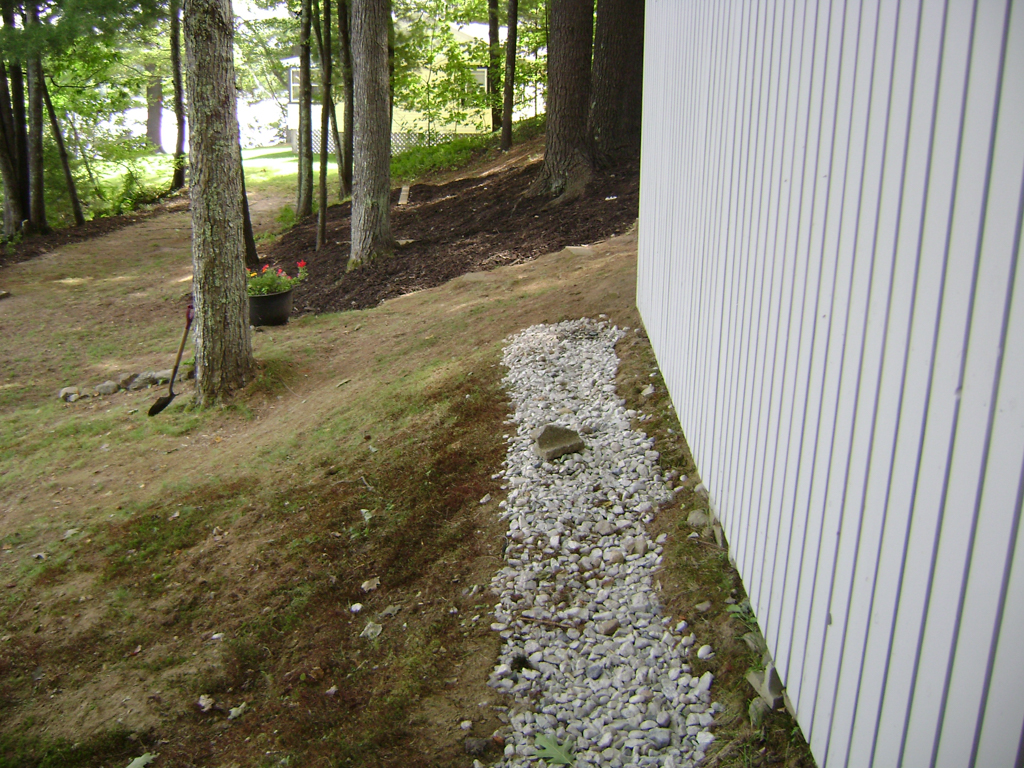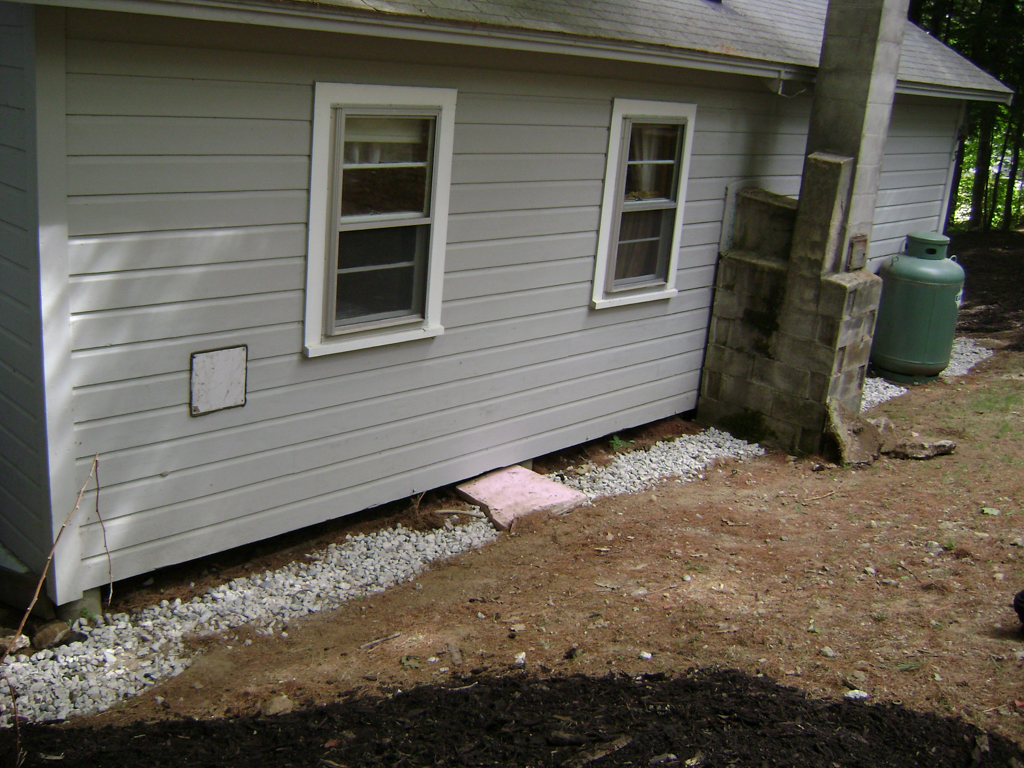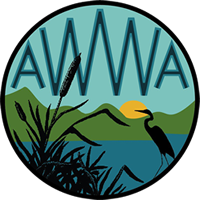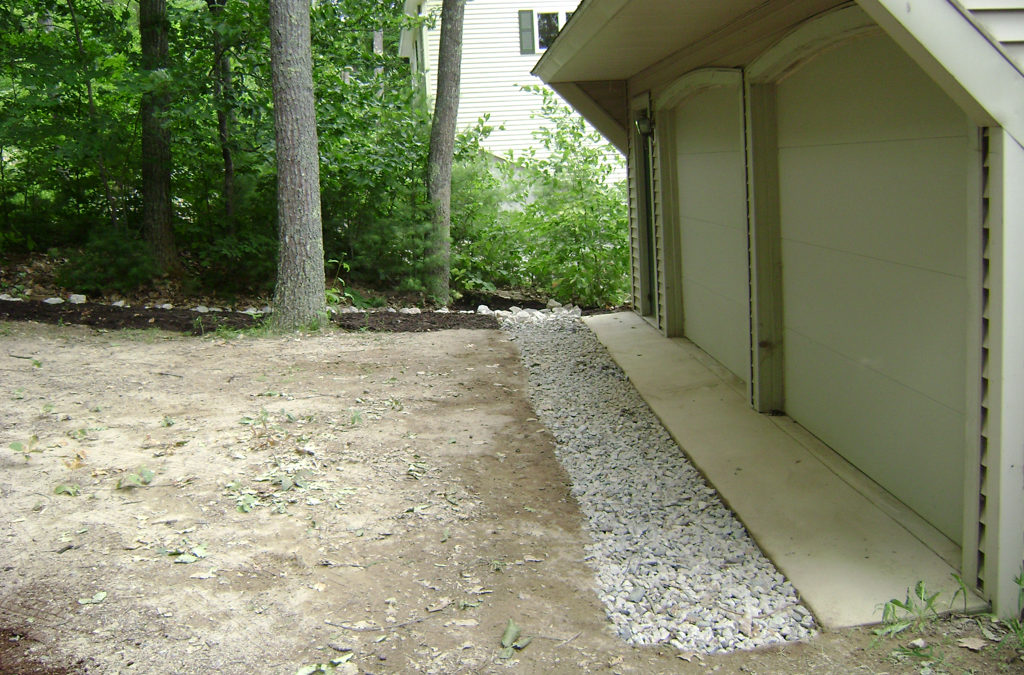Dripline Trench
Managing roof runoff on homes without gutters.
Also Called: Roof Dripline Trench, Infiltration Trench
Purpose: Dripline trenches collect and infiltrate stormwater, and control erosive runoff from the rooftop. The trenches collect roof runoff and store it until it soaks into the soil. These systems also minimize wear on your house by reducing back splash.
Installation: Dig a trench that is 18” wide and at least 8” deep along the drip line. Slope the bottom away from the house so that water will drain away from the foundation. Make sure to dispose of the soil in a flat area where it cannot be washed into the lake. Fill the trench with 1⁄2” -11⁄2” crushed stone. The front and sides of the trench may be edged with stone or with pressure-treated lumber to hold the stones in place. Extend the life of the dripline trench by lining the sides with non-woven geotextile fabric and filling to within 3” of the ground level with stone. Fold a flap of non-woven geotextile fabric over the top of the trench and top off with additional stone.
Note- This is one of the most common BMPs the AWWA Youth Conservation Corps installs!
Note: Dripline trenches work best in sand and gravel soils that can quickly disperse a large volume of water. They should not be used on structures with improperly sealed foundations, as flooding may result.
Materials: Crushed stone can be purchased at your local gravel pit. Contact your local Soil and Water Conservation District for suppliers of non-woven geotextile fabric. Other geotextiles, including landscaping weed barrier, can be substituted for smaller projects.
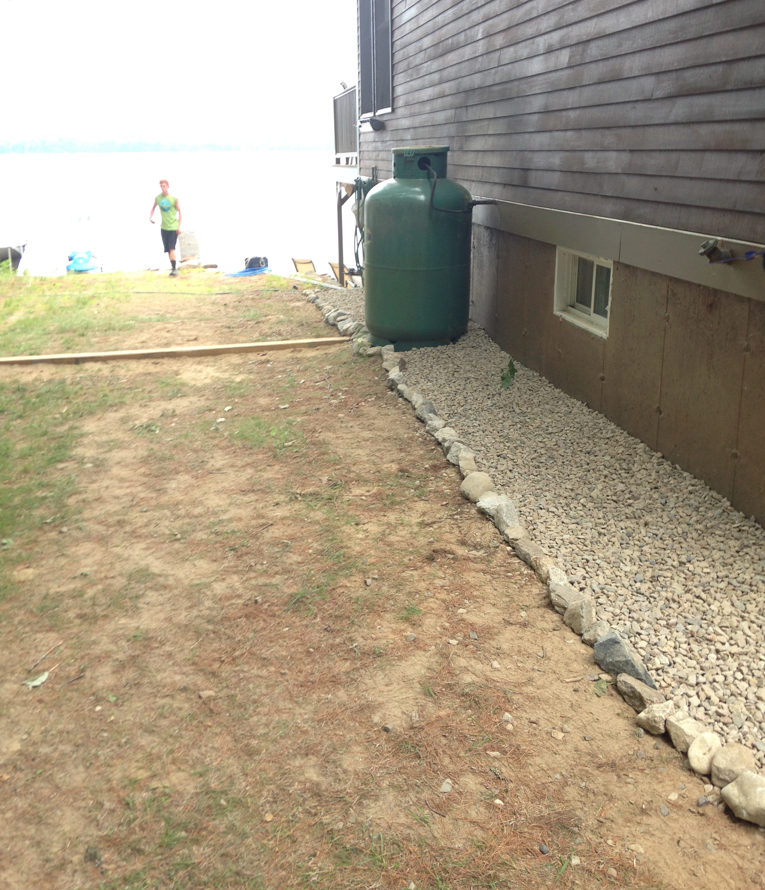
Maintenance: To maintain these structures, periodically remove accumulated debris and weeds from the surface. Trenches lined with non-woven geotextile fabric will require less frequent maintenance, however, they will still clog over time and the stone will need to be removed and washed to clean out the accumulated sediment and debris.
Note- If you live in Maine: Prior to installation, contact Maine DEP and your town’s Code Enforcement Officer to find out if permits are required. See our page with information about permitting.
Check out our technical assistance page to learn about getting a free erosion evaluation, and for more information on permitting.
The Conservation Practices for Homeowners Factsheet Series are also available at: Maine DEP or the Portland Water District. You can also find fact sheets at SOAK up the Rain NH.
Examples

